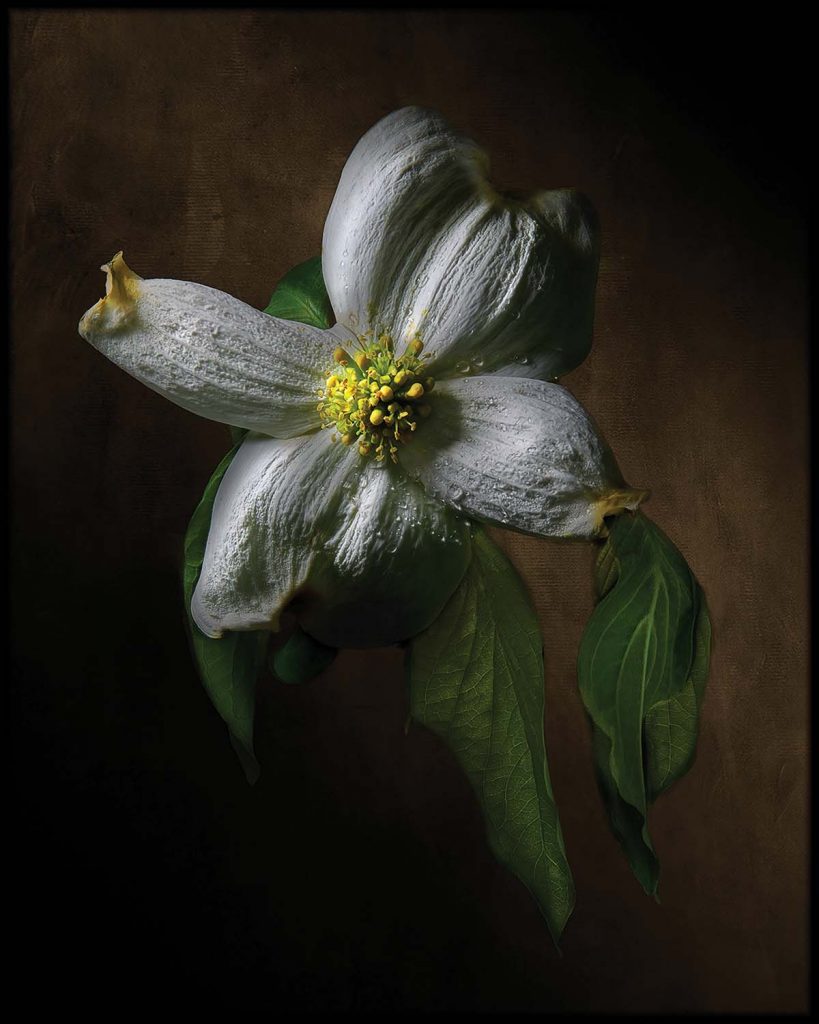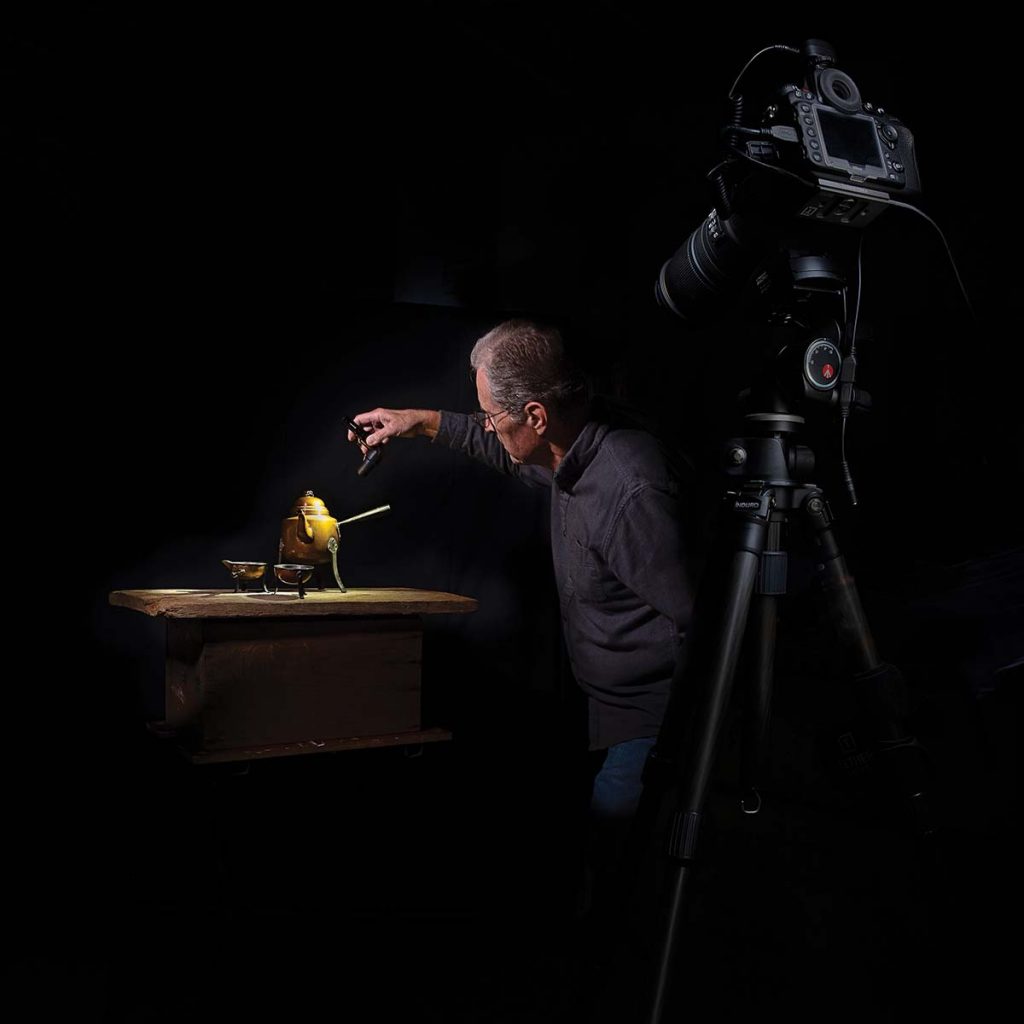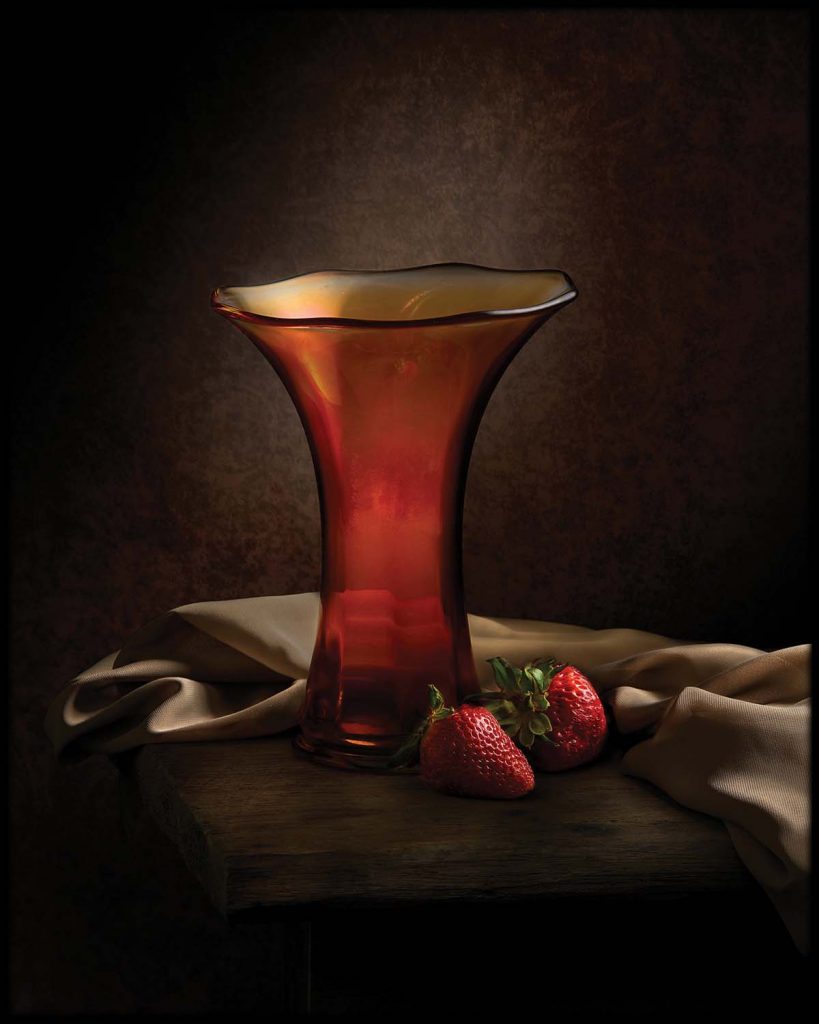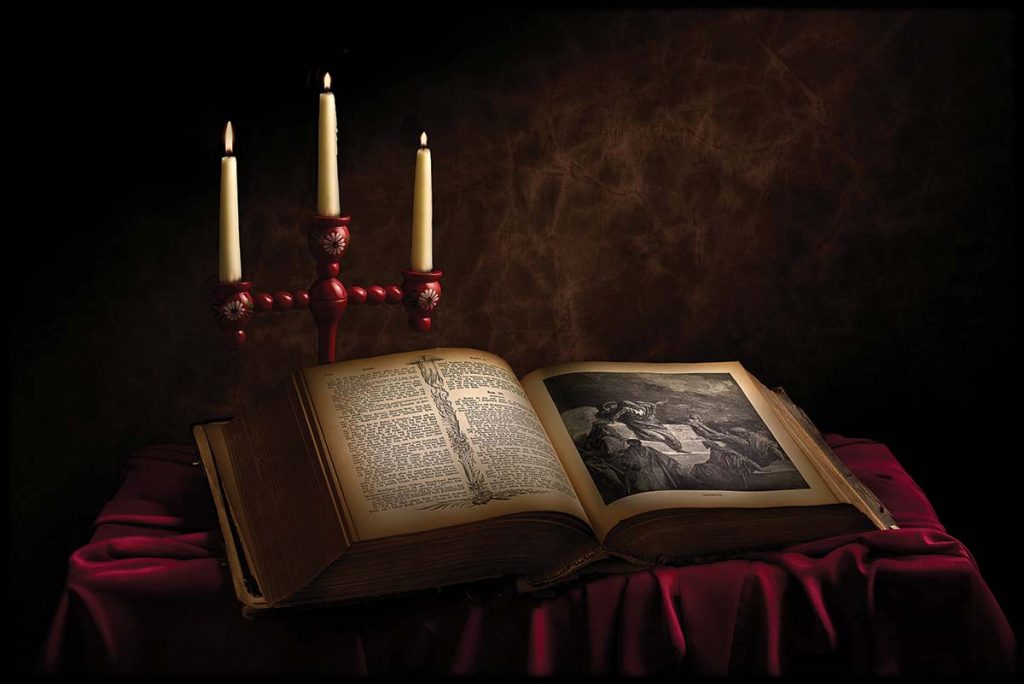
It might be magic. Using a small LED light, photographer Mark V’Soske transforms collections of ordinary objects into scenes of iconic beauty. Through this technique, he shows the quality and movement of light on objects — creating depth, texture, “and at times,” he says, “an illusion.”
V’Soske credits Renaissance masters, citing their use of the direction, contrast, and softness of light in their painted still lifes, including the control and placement of highlights and creating warm, soft shadows. “Reviewing the paintings of those artists helps give me ideas not necessarily for subject matter, but provides an education on lighting,” he explains.

V’Soske, a self-taught photographer, traces his interest in cameras back to the mid-1960s, when he was in the Air Force. “A fellow Airman asked if I wanted to join him at the base darkroom to develop some film, and when I saw the pictures develop, I was hooked.” Photography has remained a constant avocation through his 43-year career as president of Chambers of Commerce in Ohio and Michigan, and it has continued into retirement.
In V’Soske’s early years, he photographed anything and everything: landscapes, buildings, people, and portraits, learning what worked best in technical terms: exposure, light, focus, camera movement, composition, subject matter. He’s documented his exotic travels with his wife — bicycling through several countries, summiting Mount Toubkal in Morocco and Mount Kilimanjaro in Tanzania, enjoying close encounters with Silverback Mountain Gorillas in Uganda.

Strawberry Vase 
Tilling Wheel
Ten years ago, he discovered light painting. “What triggered my interest was the different quality of images that were light painted. They have a unique feel and depth that you don’t get with natural light or flash, and that was the quality I was after.”
There’s no brush involved. V’Soske explains: “Light painting uses small light sources to illuminate — or paint light on — the subject matter while it’s in complete darkness. … I light various parts of the scene individually, while taking long-exposure photographs as I apply light. The exposures can be from one to 25 seconds, depending on the intensity of the light and/or the color of the object.”

It doesn’t happen quickly. “Depending on the scene and subject, I can take upwards of 25 or more exposures. I then use Photoshop to blend the images, using the masking ability of the editing program.”
While he’s able to maintain complete control over the process, “there’s always an element of surprise … light painting brings out attributes of the object that you don’t initially see. That’s why I like to light paint common items and show them in a way people don’t [usually] see them. Yet they are real.”

He encourages personal interpretation. “It’s up to the viewer to establish the story for each of my images.” The work showing two oilcans and a dirty rag on a wooden box, for instance: “Is it in a garage? An automotive workshop?” he poses rhetorically. “Perhaps someone would look at that and it would remind them of something they did working on a project using oilcans. If that happens, I’d consider it a success.”
Another favorite is an image he created during the early days of the COVID-19 pandemic, making a subject of hard-to-get toilet paper and raising it, he says, “from a plain commodity to an objet d’art.”
Mark V’Soske, Brevard. The artist’s light paintings will be on display through Saturday, July 25, at Blue Moon Gallery (24 E. Main Street, Brevard). To learn more, visit bluemoongallerync.com or markvsoskephotography.com (mvsoskephotography on Instagram).